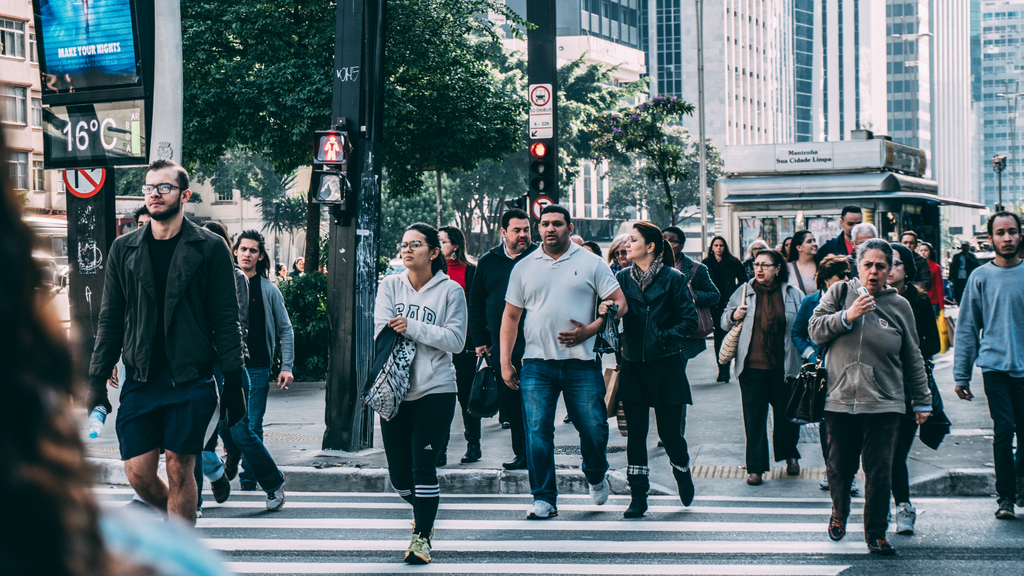
Critical Skill: Staying Alert in Today's World
In our increasingly connected world, personal safety requires a balanced approach. While technology offers convenience, it also creates new vulnerabilities.
Situational awareness aka being alert to your surroundings, is your first line of defense against potential threats. It typically takes 2-5 seconds to recognize danger, which gives attackers an advantage. The more aware you are then the quicker you can react—possibly even before a dangerous situation develops. You have heard these situational awareness suggestions before, but many times we need to be reminded more than we are taught.
Daily Habits
Top of Mind Safety
· Practice maintaining awareness, especially in unfamiliar places.
· Identify exits, potential threats, and safe areas wherever you go.
· Always look for at least two exits from any building or location.
· Know the quickest path outside in case of emergency.
· Recognize that unconventional exits (like windows) for emergencies.
· Establish meeting places with your group in case you get separated.
When Moving Around
· Minimize device use while walking, shopping, or exercising.
· Use headphones responsibly. Keep volume low to hear alerts, warnings.
· Enjoy your surroundings with eyes and ears fully alert.
· Avoid flashy clothing or jewelry that might attract unwanted attention.
· Dress to blend in, especially in unfamiliar environments.
Communication
· Confide in someone you trust about your plans.
· Tell them where you're headed and when you'll return.
· Check in regularly, especially if plans change.
· Set up ICE (In Case of Emergency) contacts on your phone.
· Share your location with trusted family members through secure apps.
Device Awareness
· Keep your phone charged throughout the day.
· Invest in an external battery pack for emergencies.
· Store important emergency numbers where they are found quickly.
· Remember: In critical situations, a working phone can be a lifesaver.
Self-Defense Strategies
· Carry small self-defense tools. (pepper spray, tazer, personal alarm)
· Learn basic self-defense skills through martial arts or safety courses.
· Choose protection you're comfortable using and get proper training.
Digital Safety
Social Media Practices
· Avoid posting your current location or travel dates.
· Don't share personal information publicly.
· Not all followers are friends. Your info might be used with harmful intent.
Online Security
· Use strong, unique passwords for online accounts.
· Enable two-factor authentication.
· Be cautious about sharing personal information.
· Keep devices updated with the latest security patches.
Workplace Safety
· Familiarize yourself with emergency protocols and evacuation plans.
· Know the location of emergency exits, stairwells, and assembly points.
· Identify potential hiding places in case of an active threat situation.
· Notice who belongs in your workspace. Report suspicious individuals.
· Secure personal belongings and sensitive information.
· Position your desk with visibility to the door if possible.
· Note emergency contacts for workplace security or management.
· Participate in safety drills and take them seriously.
· Be mindful of parking lot safety when arriving early or leaving late.
· Report maintenance issues that could pose safety hazards.
· Understand your workplace violence policy and reporting procedures.
· Learn basic first aid training to assist yourself or others in emergencies.
Travel Safety
· Research your destination for potential safety risks before departing.
· Maintain a low profile while traveling
· Learn basic local phrases and understand local customs.
· Keep copies of important documents in separate locations.
· Register with your embassy when traveling internationally.
· Use hotel safes for valuables.
Transportation Safety
Personal Vehicle Safety
· Approach car from a distance and look under and around the car.
· Check your backseat before entering your car.
· Lock doors immediately after entering your vehicle.
· Park in well-lit, populated areas whenever possible.
· Have keys ready before approaching your car.
· Stay off your phone.
· Keep a basic emergency kit in your vehicle
· Maintain your vehicle to prevent breakdowns.
When Using Services like Uber or Lyft:
· Check driver ratings before accepting a ride.
· Verify the driver's name and photo.
· Confirm the vehicle make, model, and license plate.
· Always sit in the back seat.
· Make the driver ask for your name first.
· Trust your instincts, if something feels wrong, cancel the ride.
Public Transit Safety
· Sit near the driver or conductor when possible.
· Stay in well-lit, populated waiting areas.
· Keep valuables concealed and secure.
· Remain alert and limit device use that might distract you.
· Know the transit schedule to minimize waiting time.
· Have alternative routes planned in case of disruptions.
In today's environment, personal safety requires awareness and practice. The digital age has introduced new conveniences but also new risks. By developing consistent safety habits across all aspects of your life, digital, home, travel, and daily activities you create layers of protection that significantly reduce your vulnerability. Remember that personal safety is about preparation and trusting instincts, not paranoia.
Stay aware, stay prepared, and stay safe.
Tags
- All
- 25 year food
- 25 year shelf life food
- 72 hour kit
- Best food storage types
- Best long-term food storage
- Blizzard preparedness
- Budgeting
- canning
- Certified GMO-free Emergency foods
- Certified GMO-free foods
- Coffee
- Comparison of emergency food methods
- Composting tips
- Dangers of genetically modified foods
- dehydrated food
- Edible Wild Plants
- emergcy preparedness
- Emergency Cooking
- Emergency Food
- Emergency food Christmas gifts
- emergency food storage
- Emergency Food Supply
- Emergency food supply recommendations
- Emergency Planning
- Emergency Preparedness
- Emergency preparedness advice
- emergency preparednesss
- Emergency Supplies
- Emergency supplies checklist
- Emergency Survival
- emergency survival gear
- Emergency survival kit checklist
- Emergency Survival skills
- exercise
- Family emergency preparedness
- Family emergency preparedness plan
- Family Preparedness
- Food Storage
- Food storage 25 year shelf life
- Food storage amounts
- Food storage Christmas
- Food storage containers long term
- Food Storage Secrets
- Food storage serving size
- Food storage types compared
- freeze dried food
- Freeze dried food storage
- freeze dried meats
- Freeze-dried emergency food storage
- Fruit Trees
- Gardening
- Getting Started
- Gluten-free food Storage
- Gourmet emergency food
- Healthy food storage
- How much emergency food to store
- Improved emergency preparedness
- Jared Markin
- Jared Matkin
- Legacy Premium
- Lessons learned from Hurricane Sandy
- Lessons learned from natural disasters
- long-term food storage
- Long-term Food Storage Guidelines
- Long-term Food Storage tips
- Long-term water storage
- Mental Emergency Preparedness
- Mental toughness
- Money-saving tips
- Natural disaster planning
- Natural Disasters
- Perfect Christmas gifts
- Pet Emergency preparedness checklist
- Pet Emergency preparedness kit
- Pet Emergency Survival tips
- Pets and Emergency Preparedness
- Plant Foraging
- portable solar panels
- portable solar power
- portable water filters
- protein drinks
- Risk of genetic modification
- Seed saving and storage
- Seed saving guide
- Self-reliance
- Self-reliant practices
- Shelf Life
- Solar Cooking
- Solar Ovens
- Special Dietary needs
- Stranded in a car in a blizzard
- Survival food
- Survival Gear
- survival kit
- Survival kits
- Survival Ovens
- Survival Skills
- survivalist gear
- suvival kit
- Tree Pruning tips
- Tree Trimming basics
- unique ideas
- water bottle with filter
- water filter
- water filter straw
- water filters
- Water Filtration
- water pitcher with filter
- water pitchers with filters
- Water purification
- Wild Food Foraging
- Winter composting
- Winter driving
- Winter preparedness tips
- Winter storm preparedness tips
- Winter Survival







